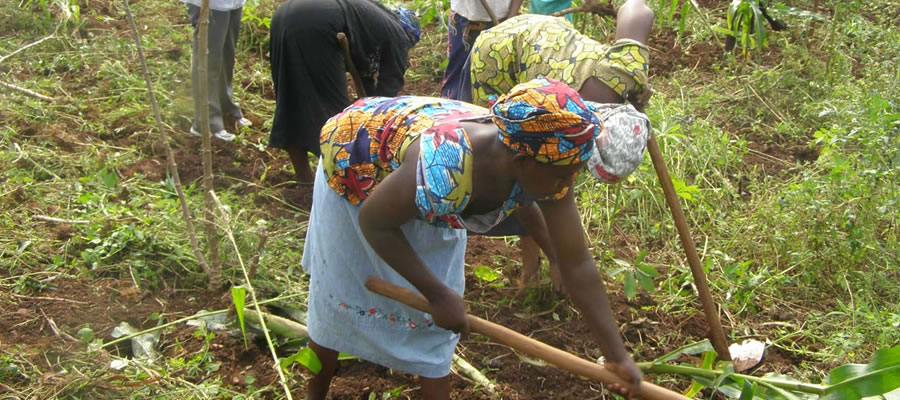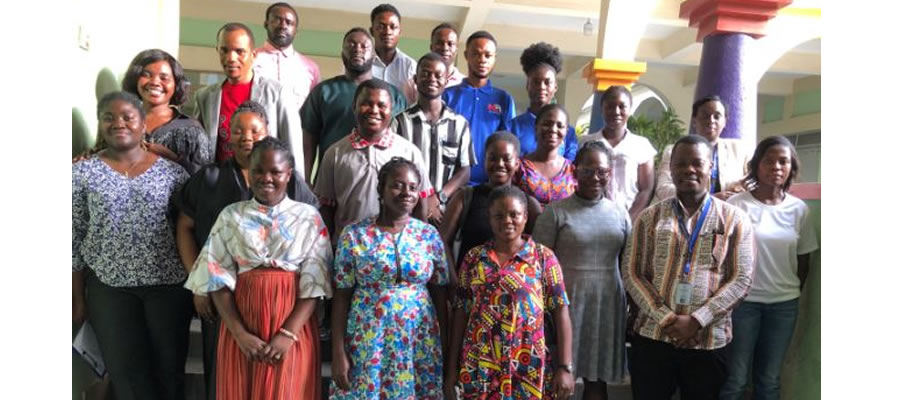

Introduction
For an administrative unit such as the New Juaben Municipality to be able to achieve its desired objectives, implement its policies and be able to achieve a desired set of programmes, knowledge of its population size is very vital for its development planning. It is for this reason that the 2010 Population and Housing Census PHC), had, as one of its several objectives, the provision and updating of data on socio-economic and demographic characteristics at the national, regional and district levels. The two characteristics of population which receive most attention in demographic analysis are age and sex. Age-sex structure usually forms the basis for planning, research and population projections. The levels and changes of the three components of population change, fertility, mortality and migration, are important for socio-economic planning and policy adoption. In developing countries such as Ghana, where population registers are virtually non-existent, censuses provide a more comprehensive data on fertility, mortality and migration in terms of coverage than surveys and other sources. The population size and distribution in the New Juaben Municipality, the age-sex structure, the rates of migration, fertility and mortality are discussed in this chapter.
Population Size and Distribution
The population size and distribution by type of locality (urban and rural) are presented in Table 2.1. The population of the Municipality constitutes just seven percent of the population of the Eastern Region. Its urban share of the Eastern Regional population is 15 percent and a rural share of less than one percent (0.8%). From the table, the population of the New Juaben Municipality is 183,727, consisting of more females (95,040) than males (88,687). Majority of the population in the Municipality live in urban areas (93.3%).
Age-Sex Structure
The age group with the highest population within the Municipality is 20-24 years accounting for 12 percent of the population. Males in the age groups 0-4, 5-9 and 20-24 out-number their female counterparts while for all other age groups, females out number males. From the table , the Municipality has a youthful population with the population aged less than 15 years constituting almost a third (30.8 percent) of the population. The sex ratio (number of males to 100 females) of the Municipality is 93. However, for age groups, 0-4 (106), 5-9(102) and 20-24 (103), the sex ratios area more than 100. Sex ratios for age groups above 80 years are lower than the overall average (93.3). In terms of locality of residence, less than 10 percent of the population in the Municipality live in rural areas.
The age-sex structure is graphically represented by a pyramid in Figure 2.1. The figure indicates a broad base at age 0-4 years, narrows at age groups 5-9 and 10-14 and picks up again until at age 20-24 years when both females and males survive more than all other age groups. For both sexes, more females than males survive to higher ages although more males than females are in the age group 0-4 years.
Dependency Ratio
The age-dependency ratio is the ratio of the dependent population (those under age 15 and 65 years and older) to the working-age population (15 to 64 years). The age-dependency ratio is often used as an indicator of the economic burden the productive population must carry. Countries with very high birth rates usually have the high age-dependency ratios because of the large proportion of children in the population.
Table 2.3 shows the age-dependency ratios of the New Juaben Municipality (computed from Table2.2). From the Table, the Municipality has a dependency ratio of 56.1. This means that on the average two people from the working age population (15-64yrs) have one person in the dependent population to cater for. The child dependency ratio of 48.0 means that there are 48 children to be catered for by every 100 people in the working age group. The ratios for both males and females are also similar to that of the Municipal average. For instance, there is one female child on the average to be taken care of by two females in the working age group. Similarly, one male child is supported by two males in the working age group.
Migration, Fertility and Mortality
Population growth and distribution are influenced by migration, fertility and mortality. The movements of people into and out of specific geographical locations within a country are shaped by a variety of factors: population size, system of governance, social structure, available land, climate, vegetation, size and structure of the economy, and level of technology. Fertility patterns and trends provide a sense of the future course of population growth and its potential implications for other demographic processes. Until the mid-1980s, the total fertility rate for Ghana remained stable at around seven children per woman (Gaisie, 1976; Owusu, 1984; Shah and Singh, 1985). T
his was considered exceptionally high in relation to available national resources and several attempts were made by government to lower the rate of childbearing in the Country (National Population Council, 1994; Republic of Ghana, 1995).The study of the mortality levels, patterns and trends serves three main purposes. First it provides information about the population’s state of health, which in turn serves as a measure of living standards in the country. It also gives an indication of the social differences that exist within the society. Lastly, it provides information on the population’s future growth potential. Knowledge about a country’s mortality situation is therefore relevant for effective development planning. This section examines the characteristics, trends, differentials and determinants of internal migration and urbanization, fertility and mortality within the municipality.
Migration
Table 2.4 shows the birth place by duration of residence of migrants in the Municipality. The 2010 Census puts the total population of migrants within the Municipality at 80,838. Those born elsewhere within the Eastern Region is 48.5 percent of the total migrant population while those residing in the Municipality but born in another region constitutes 51.5 percent. Of the migrants born outside the Eastern Region, those born in the Volta region is the highest (8,904) while those born in Upper East Region is the lowest (536). Migrants within the Municipality who were born outside Ghana constitute less than four percent (3.3%) of the total migrant population.
One fifth of the migrants have lived in the Municipality for at least 20 years, while 27.5 percent have lived in the Municipality for between one and four years. Migrants born in the Volta Region but have lived within the Municipality for over 20 years constitutes 24.7 percent. About 31percent each of migrants born in Western, Greater Accra, Brong Ahafo and outside Ghana have lived in the Municipality for between one and four years.
Fertility
Children ever born and children surviving are presented in this section. As indicated in Table 2.5, the total number of females 12 years and older in the Municipality is 72,687. The total number of children ever born is 144,014 comprising 72,598 males and 71,416 females. Out of the 144,014 children ever born, 124,809 children survived. This consists of 61,849 males and 62,960 females. About 15 percent of males ever born and 12 percent of females ever born died. In general, children ever born increases with age. Women in the age-group 50-54 recorded the highest number of children ever born (16,890) and children surviving (15,038). As expected, the lowest number of children ever born and children surviving is recorded for the age group 12-14 years.
From Table 2.6, the Total Fertility Rate (TFR) for the Municipality is 2.4 which is lower than the Eastern region average of 3.5. General Fertility Rate (GFR) and Crude Birth Rate for the Municipality are 68.0 and 19.7 respectively.
Mortality
Within the 12 months preceding the census, 1,085 household deaths occurred in the Municipality as reported by households. This translate to a Crude Death Rate (CDR) of 5.9 per 1000 population. Of the total household deaths, 581 were males and 504 were females. Infant deaths accounted for the highest percentage of 11.8 of household deaths with the lowest household deaths (1.0 percent) occurring in the age group 10-14 years.
Infant deaths amongst females is about 10 percent of total female deaths within the household while that for the male infant is 13.4 percent of the total male deaths.
Within the same period, deaths of females aged 12-54 is 239 with pregnancy related deaths accounting for 22 out of the number. Maternal deaths are higher for persons in age group 25-34 years.
Date Created : 11/26/2017 3:32:37 PM





















 facebook
facebook
 twitter
twitter
 Youtube
Youtube
 +233 593 831 280
+233 593 831 280 0800 430 430
0800 430 430 GPS: GE-231-4383
GPS: GE-231-4383 info@ghanadistricts.com
info@ghanadistricts.com Box GP1044, Accra, Ghana
Box GP1044, Accra, Ghana